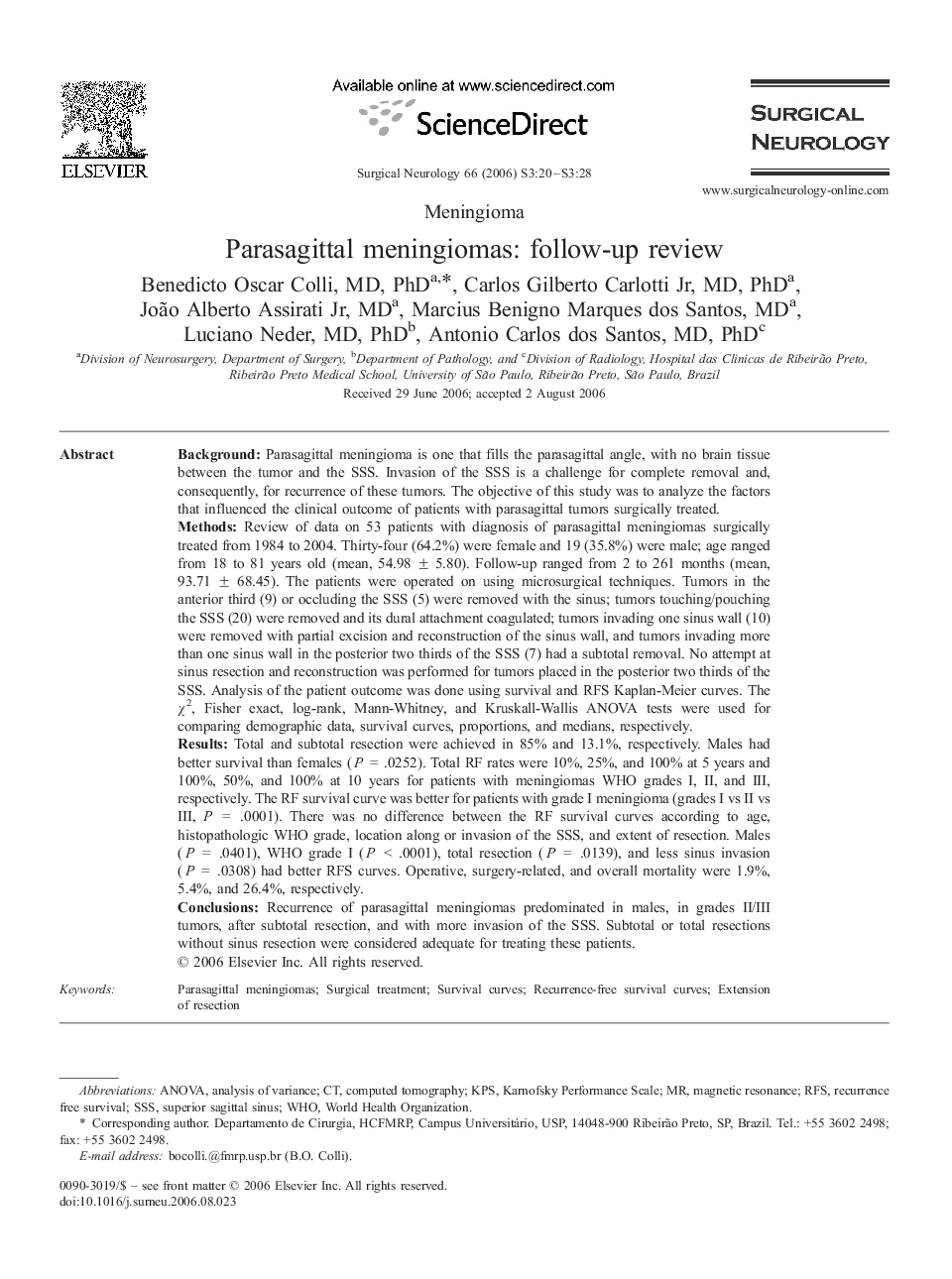| Article ID | Journal | Published Year | Pages | File Type |
|---|---|---|---|---|
| 3094093 | Surgical Neurology | 2006 | 8 Pages |
BackgroundParasagittal meningioma is one that fills the parasagittal angle, with no brain tissue between the tumor and the SSS. Invasion of the SSS is a challenge for complete removal and, consequently, for recurrence of these tumors. The objective of this study was to analyze the factors that influenced the clinical outcome of patients with parasagittal tumors surgically treated.MethodsReview of data on 53 patients with diagnosis of parasagittal meningiomas surgically treated from 1984 to 2004. Thirty-four (64.2%) were female and 19 (35.8%) were male; age ranged from 18 to 81 years old (mean, 54.98 ± 5.80). Follow-up ranged from 2 to 261 months (mean, 93.71 ± 68.45). The patients were operated on using microsurgical techniques. Tumors in the anterior third (9) or occluding the SSS (5) were removed with the sinus; tumors touching/pouching the SSS (20) were removed and its dural attachment coagulated; tumors invading one sinus wall (10) were removed with partial excision and reconstruction of the sinus wall, and tumors invading more than one sinus wall in the posterior two thirds of the SSS (7) had a subtotal removal. No attempt at sinus resection and reconstruction was performed for tumors placed in the posterior two thirds of the SSS. Analysis of the patient outcome was done using survival and RFS Kaplan-Meier curves. The χ2, Fisher exact, log-rank, Mann-Whitney, and Kruskall-Wallis ANOVA tests were used for comparing demographic data, survival curves, proportions, and medians, respectively.ResultsTotal and subtotal resection were achieved in 85% and 13.1%, respectively. Males had better survival than females (P = .0252). Total RF rates were 10%, 25%, and 100% at 5 years and 100%, 50%, and 100% at 10 years for patients with meningiomas WHO grades I, II, and III, respectively. The RF survival curve was better for patients with grade I meningioma (grades I vs II vs III, P = .0001). There was no difference between the RF survival curves according to age, histopathologic WHO grade, location along or invasion of the SSS, and extent of resection. Males (P = .0401), WHO grade I (P < .0001), total resection (P = .0139), and less sinus invasion (P = .0308) had better RFS curves. Operative, surgery-related, and overall mortality were 1.9%, 5.4%, and 26.4%, respectively.ConclusionsRecurrence of parasagittal meningiomas predominated in males, in grades II/III tumors, after subtotal resection, and with more invasion of the SSS. Subtotal or total resections without sinus resection were considered adequate for treating these patients.
